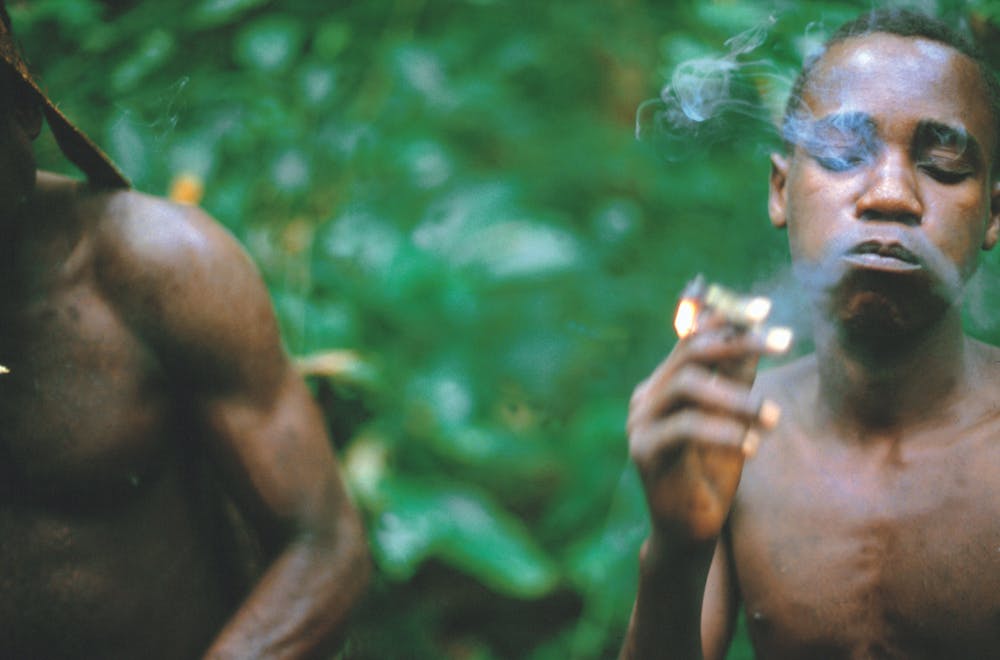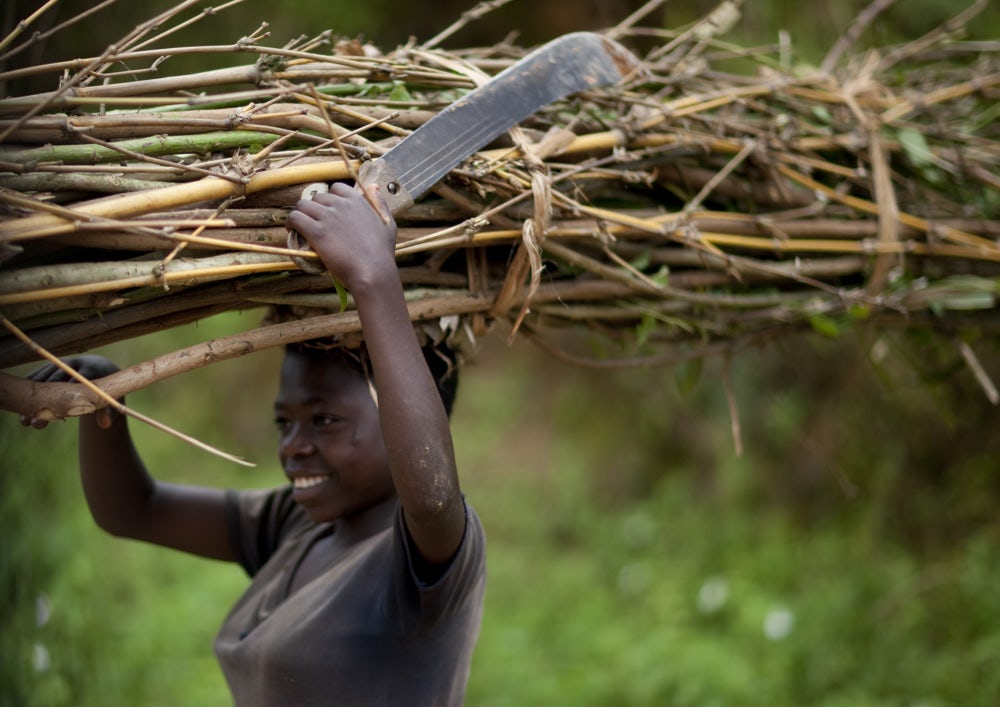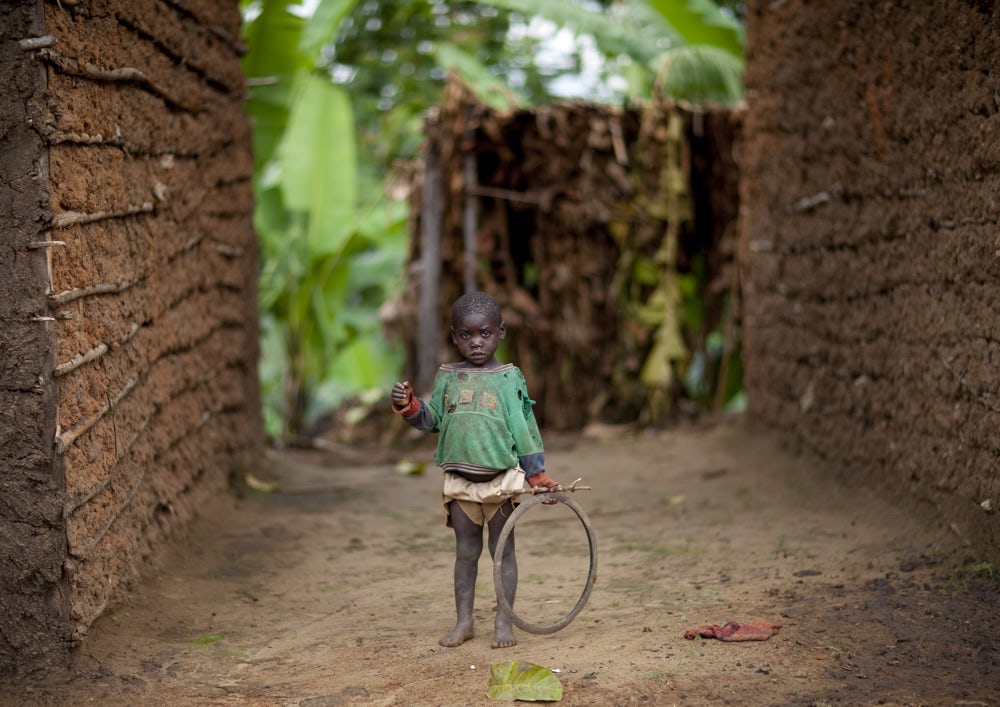
Pygmy man smoking hemp in Central African Republic in 2001 – Aka pygmys men smoking hemp while on a traditional hunt. (Photo by Veronique DURRUTY/Gamma-Rapho via Getty Images)
Deep In the Heart Of The Congo, Pygmie Tribes Are Selling Weed To Survive
Deep in the jungle of the Democratic Republic of the Congo, Pygmies are forced to eke out a living in the only way they know how: selling marijuana.
Deep in the jungle of the Democratic Republic of the Congo, communities of indigenous people are forced to eke out a living in the only way they know how: selling marijuana. It’s a way of life that’s been passed down through generations. Without any other means of work, the Pygmies harvest their crop and sell it to the neighboring villages
There are about 600,000 indigenous Pygmies who live in the Congo, and like most indigenous populations, they’re often subjugated and subjected to the most impoverished conditions in the country. According to National Geographic, they survive on about half the income of the country’s non-indigenous people, (though they are also mostly poor.) Pygmies mostly live on the outskirts of Virunga National Park.
Virunga National Park is a 7,800 square kilometer expanse of jungle that is situated near the Congo’s borders with Rwanda and Uganda. It’s world renown for its beauty and diversity, but it remains plagued with numerous social and political issues, slavery and corruption.
Sometimes, the Congolese army will storm villages and take the Pygmies marijuana, which is still illegal in the Democratic Republic of the Congo. However, the Pygmies never know whether these authorities will be friendly, and even purchase their crop, or whether they’re coming to the village to confiscate their marijuana. This can make life unpredictable for the Pygmies.
Many Pygmies cannot afford to stop growing and selling weed

The Pygmies will also covertly plant marijuana seeds in Virunga National Park, where indigenous people have been removed for conservational purposes since the park was officiated in 1952. But the indigenous peoples of the region have been surviving off the land here for hundreds of years. They don’t intend to follow the borders of the government, which has done little to help their communities.
In order to harvest this secret crop, the farmers will hike into the jungle in the early hours of the morning. The Pygmies have gotten good at knowing how to hide their marijuana plants among the foliage and tracking them down using complex, secret trail systems and markers. But this is also highly dangerous, and as Survival International tells a National Geographic, the pygmies often “face harassment, arrest, beatings, torture and even death at the hands of anti-poaching squads.”
Selling marijuana has other consequences for the Pygmies. After rebel violence led to mass displacement in the region in the mid-2000s, an official list of Pygmy families was drawn up and offered aid. But there was a catch. In order to receive food, water, and health services, they needed to stop selling marijuana.
The majority of Pygmy families, whose livelihood depends on the sale of marijuana, refused. Now, only the families who do not grow marijuana receive this aid. But the communities that continue to sell marijuana do not intend on stopping anytime soon. Not only is it their only economic option, but the Pygmies also use marijuana for medicinal purposes, to cure stomachaches, the flu or other basic illnesses. Researchers have even found that marijuana use can lead to a decrease in bodily parasites for the Pygmies.
For them, the difficulties and heartache brought on by their trade is a necessary evil. Marijuana is a deeply entrenched part of who they are and how they make their living. Just as the knowledge of marijuana growing was passed on to them by their parents, they will pass the tradition along to the children of the next generation.
Herb Recommended Products:
READ MORE










